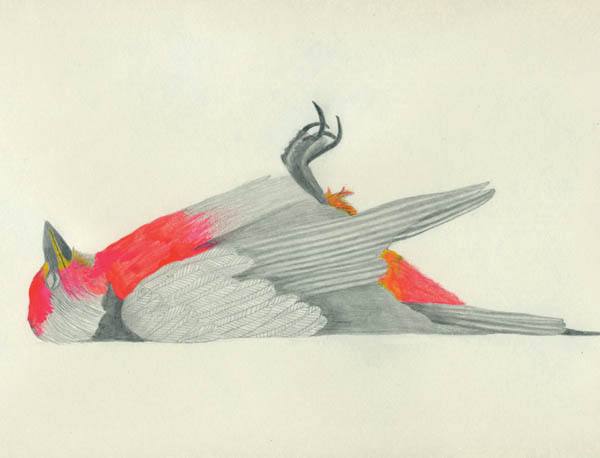Painting, drawing, mixed media, illustration, hand-lettering—Lisa Congdon does it all, and she does it all very well. She was an elementary school teacher for years, and didn’t take her first painting class until her early thirties. She now makes a living solely from her artwork, which includes both commissioned illustrations and personal art projects. She has done an amazing job of promoting herself—not always an easy task for an artist! Lisa has created a huge online following through her blog and her Etsy shop. She now spends her days in her lovely studio, where she illustrates books, designs wallpaper, creates custom fonts, and paints her heart out. Oh, and she also happens to have a couple of her own books under her belt . . . with a few more underway!
JC—When did you start to feel like an artist?
LC—I didn’t start making art until I was about thirty-two years old. I was asked to show my work publicly for the first time when I was thirty-seven. I remember the day I got the e-mail from the small shop and gallery in Seattle where I had my first show. I was at my job, behind my desk in my little office, and I remember totally freaking out, and thinking, “OK, now I’m an artist,” even though I had already been making work for five years.
JC—Would you ever give up on a piece? If not, how do you push through?
LC—I have become really good at pushing through! I took a couple painting classes from this guy about ten years ago who used to talk about “the painting curve,” which looks like a “U.” He said when you start out, you are at the top, everything looks good at first. And then you start adding layers, and it gets messy and things might even look distorted and horrible. This is when you are at the bottom of the curve. This is also where you need to push through to get back to the top. I have learned to push through the bottom of the painting curve after years of practice. And that most of the time it pays off. There are rare occasions where paintings or drawings or collages aren’t successful after working at them for a long time, but those times are rare. I am always pretty determined to keep going.
JC—Is your day job as an artist/illustrator a creative drain, or is it fuel for your personal work?
LC—I think because I spend most of my time illustrating other people’s ideas or words, I am so motivated to work on my “own” stuff that I am completely excited to draw from my own inner landscape, when I have the time. I think it’s important for me not to think of my personal work as something that I do only when the illustration work is finished or when I have an upcoming show at a gallery. I need to make time for personal work all the time, especially if I’m feeling drained from the other stuff. That is easier said than done, but I’m working on it.
JC—How do you deal with your inner critic?
LC—My inner critic talks to me every day. I do lots of inner pep talking to combat the voice that tells me my work sucks, or that so-and-so isn’t going to like it. I have been doing this art thing for a few years now, and one thing I have learned is that by the time I finish a piece I usually hate it, because I have been staring at it and belaboring over it for so long. But most of the time I show it to the art director or client or my friend, and they like it. Sometimes they love it. And that gives me some perspective. I realize now that what I’m critical of in my own work, other people don’t see. Most of the time, they see what’s beautiful. And that’s the great thing about being an artist. Your own inner critic is always going to be overshadowed by the love that other people have for your work.
JC—Where do you find inspiration?
LC—As a regular part of my art and illustration work, I reserve days just for gathering inspiration and brainstorming ideas. I make mind maps of potential imagery or materials, make lists, scour images on the Web, go to bookstores, etc., etc. I have to think about it as part of my job, because it really is part of my creative process that leads to the making of things.
JC—How do you navigate your way through a creative block?
LC—Getting through a creative block can be a really agonizing experience. Sometimes I don’t do anything but sit and stare at the floor or wall in my studio for a period of time until I get some inkling of resolve to take a certain direction or make a certain leap. I find that just sitting with my discomfort for a while and trying to figure out where it’s coming from can be helpful. I think a lot of the time creative blocks are caused by simple, solvable things like hunger or sleep deprivation. But they can also be bigger things like fear of the unknown, or not having the right skill set, or of making something ugly. So my first step is to figure out if I need a snack, or a nap, or if I am really scared of something. If I’m scared, I try to remind myself that if I end up failing, only I need to know about it; my studio is a safe place for experimentation and failure.

If I end up failing, only I need to know about it; my studio is a safe place for experimentation and failure.

I need to make time for personal work all the time, especially if I’m feeling drained from the other stuff.
